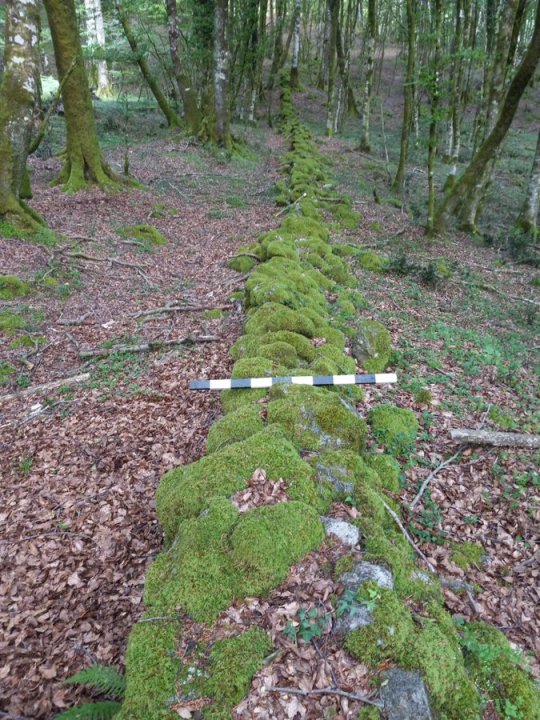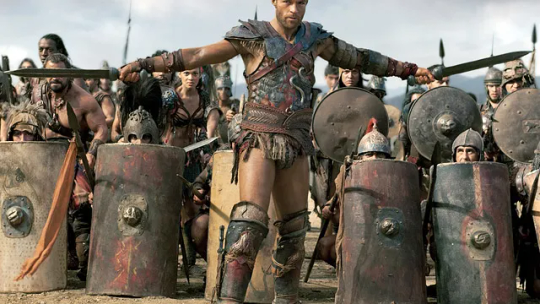#Dossone della Melia
Explore tagged Tumblr posts
Text
UN NUOVO STUDIO AVREBBE IDENTIFICATO IL SITO DELLA BATTAGLIA DI CANTENNA TRA SPARTACUS E I ROMANI
UN NUOVO STUDIO AVREBBE IDENTIFICATO IL SITO DELLA BATTAGLIA DI CANTENNA TRA SPARTACUS E I ROMANI Un antico muro di pietra assemblato a secco e ormai celato in un bosco della Calabria potrebbe essere stato utilizzato dalle truppe romane durante le battaglie per contrastare la rivolta degli schiavi e del gladiatore Spartacus e dei suoi uomini. Gli archeologi dell'Università del Kentucky guidati da...
0 notes
Text

Ancient Roman Wall Used to Trap Spartacus Found in Italy
A team of archaeologists has found the remains of a Roman-constructed wall in Calabria, southern Italy. It was built with the purpose of trapping Spartacus, the former Roman gladiator who escaped and led a slave revolt.
The researchers behind this find, led by Dr. Paolo Visona, a classical archaeologist from the University of Kentucky in the United States, found the structure in the mountainous region of Calabria, where Spartacus and his men fled in 71 BC in order to escape Sicily.
Walls such as this one were constructed under the orders of the Roman general Marcus Licinius Crassus, who was in charge of the Roman legions. Crassus’ mission was to capture or murder Spartacus and his band of freed slaves and former gladiators.

Roman wall trapped Spartacus, a slave leader
The ancient wall dissects an area of the Dossone della Melia forest in the Calabria region right on the southern tip of Italy. The excavated stone wall and supporting earthwork was roughly 1.7 miles long and is mostly in good condition.
Archaeologists also uncovered a Roman defensive ditch known as a fossa as well as the remains of what seemed to have been an embankment system.
“The wall has now been conclusively identified as part of the structures built by the Roman general Marcus Licinius Crassus to contain the slave revolt leader Spartacus and his forces,” the Archaeological Institute of America said in a statement announcing the discovery.

Mostly covered by vegetation with only small sections visible to the eye, the remains of the Roman wall were not prominently on display. However, a group of environmental workers came across parts of the stone wall while hiking through the forest, and believing it to be something ancient, they notified local cultural authorities.
Researchers and archaeologists analyzed the structure after some time. They used ground-penetrating radar and LiDAR aerial survey equipment to find out more about the semi-buried wall’s construction. They also extracted soil samples and took magnetometer readings in an effort to learn more about when the wall was built.
Historical accounts of Spartacus’ life come primarily from Plutarch and Appian, who both penned their works more than a hundred years after his death. Plutarch’s Life of Crassus and Appian’s Civil Wars provide the most thorough account of the slave revolt.
Although he was a major character in Roman history, no contemporary sources exist, and all accounts were written by people who were only indirectly involved. There have been no testimonies from the slaves of eyewitnesses.
Very little is known about Spartacus besides the events of the war, and extant accounts are full of contradictions.
By Matthew Norman.



#Ancient Roman Wall Used to Trap Spartacus Found in Italy#Calabria Italy#Dossone della Melia forest#Spartacus#Roman general Marcus Licinius Crassus#Roman defensive ditch known as a foss#ancient artifacts#archeology#archeolgst#history#history news#ancient history#ancient culture#ancient civilizations#roman history#roman empire
151 notes
·
View notes
Text
Aspromonte, nuovi ritrovamenti lungo antiche mura romane

Aspromonte, nuovi ritrovamenti lungo antiche mura romane. Un articolato programma di ricerche condotto dalla Soprintendenza Archeologia, Belle Arti e Paesaggio per la città metropolitana di Reggio Calabria e la provincia di Vibo Valentia, in collaborazione con il Parco Nazionale dell’Aspromonte, ha consentito la “riscoperta” di una struttura muraria che attraversa per quasi 3 chilometri i boschi del Dossone della Melia, superando ripidi dislivelli, un pianoro e, nel tratto conclusivo, anche un... Leggi articolo completo su La Milano Read the full article
0 notes
Text
Scoperto il sito dell'epico "scontro" tra Spartaco e i Romani La scoperta dell’antico muro nel “scontro” tra Spartaco e i Romani Un muro di pietra millenario, nascosto nella foresta italiana, è stato identificato come il luogo dove le forze romane cercarono di fermare Spartaco durante la ribellione degli schiavi. Dettagli dell’esplorazione archeologica Gli archeologi hanno individuato il muro lungo 2,7 chilometri nella foresta di Dossone della Melia, in Calabria. Il team ha impiegato tecnologie come il georadar e il lidar per studiare il sito, confermando la sua natura difensiva. Un sistema difensivo romano Il muro era accompagnato da un fossato, tipico sistema difensivo romano, utilizzato in passato da comandanti come
0 notes